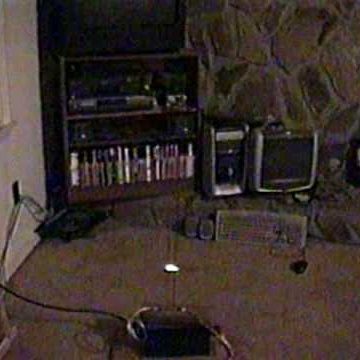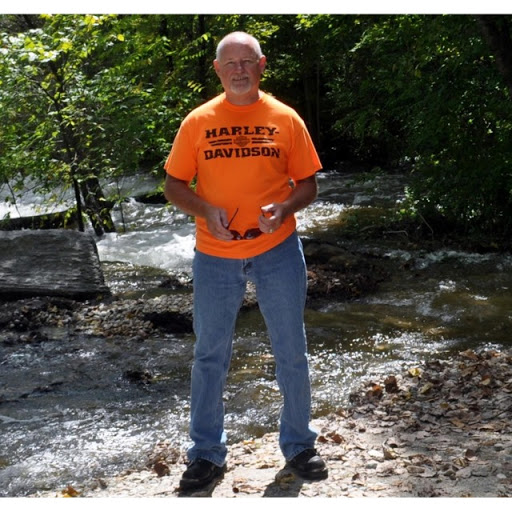Earl J Brown
age ~68
from Somers Point, NJ
- Also known as:
-
- Earl C Brown
- Phone and address:
- 130 E Ocean Ave, Somers Point, NJ 08244
Earl Brown Phones & Addresses
- 130 E Ocean Ave, Somers Point, NJ 08244
- Sellersville, PA
- Philadelphia, PA
- Warrington, PA
- Yardley, PA
- Southampton, PA
- Perkasie, PA
- Quakertown, PA
Isbn (Books And Publications)

Basic Concepts in Pathology: A Student's Survival Guide
view sourceAuthor
Earl J. Brown
ISBN #
0070083215







Medicine Doctors

Dr. Earl R Brown, Philadelphia PA - MD (Doctor of Medicine)
view sourceSpecialties:
Family Medicine
Address:
Earl R Brown MD PC
1335 W Tabor Rd Suite 110, Philadelphia, PA 19141
2152243499 (Phone)
1335 W Tabor Rd Suite 110, Philadelphia, PA 19141
2152243499 (Phone)
Certifications:
Family Practice, 1996
Awards:
Healthgrades Honor Roll
Languages:
English
Hospitals:
Earl R Brown MD PC
1335 W Tabor Rd Suite 110, Philadelphia, PA 19141
Einstein Medical Center - Philadelphia
5501 Old York Road, Philadelphia, PA 19141
1335 W Tabor Rd Suite 110, Philadelphia, PA 19141
Einstein Medical Center - Philadelphia
5501 Old York Road, Philadelphia, PA 19141
Education:
Medical School
Temple University
Graduated: 1977
Medical School
Thomas Jefferson U
Graduated: 1977
Temple University
Graduated: 1977
Medical School
Thomas Jefferson U
Graduated: 1977

Earl D. Brown
view sourceSpecialties:
Gastroenterology, Hepatology
Work:
Indianapolis GastroenterolgyIndianapolis Gastroenterology & Hepatology
8051 S Emerson Ave STE 200, Indianapolis, IN 46237
3178652955 (phone), 3178652944 (fax)
8051 S Emerson Ave STE 200, Indianapolis, IN 46237
3178652955 (phone), 3178652944 (fax)
Education:
Medical School
Indiana University School of Medicine
Graduated: 1980
Indiana University School of Medicine
Graduated: 1980
Procedures:
Colonoscopy
Endoscopic Retrograde Cholangiopancreatography (ERCP)
Esophageal Dilatation
Sigmoidoscopy
Upper Gastrointestinal Endoscopy
Vaccine Administration
Endoscopic Retrograde Cholangiopancreatography (ERCP)
Esophageal Dilatation
Sigmoidoscopy
Upper Gastrointestinal Endoscopy
Vaccine Administration
Conditions:
Acute Pancreatitis
Cholelethiasis or Cholecystitis
Cirrhosis
Inflammatory Bowel Disease (IBD)
Irritable Bowel Syndrome (IBS)
Cholelethiasis or Cholecystitis
Cirrhosis
Inflammatory Bowel Disease (IBD)
Irritable Bowel Syndrome (IBS)
Languages:
English
Spanish
Spanish
Description:
Dr. Brown graduated from the Indiana University School of Medicine in 1980. He works in Indianapolis, IN and specializes in Gastroenterology and Hepatology. Dr. Brown is affiliated with Community Health Network South Campus and Major Hospital.

Earl R. Brown
view sourceSpecialties:
Family Medicine
Work:
Earl R Brown MD PC
1335 W Tabor Rd STE 110, Philadelphia, PA 19141
2152243499 (phone), 2152245023 (fax)
1335 W Tabor Rd STE 110, Philadelphia, PA 19141
2152243499 (phone), 2152245023 (fax)
Education:
Medical School
Temple University School of Medicine
Graduated: 1977
Temple University School of Medicine
Graduated: 1977
Procedures:
Arthrocentesis
Electrocardiogram (EKG or ECG)
Hearing Evaluation
Vaccine Administration
Electrocardiogram (EKG or ECG)
Hearing Evaluation
Vaccine Administration
Conditions:
Abnormal Vaginal Bleeding
Acute Conjunctivitis
Acute Pharyngitis
Allergic Rhinitis
Alopecia Areata
Acute Conjunctivitis
Acute Pharyngitis
Allergic Rhinitis
Alopecia Areata
Languages:
English
Description:
Dr. Brown graduated from the Temple University School of Medicine in 1977. He works in Philadelphia, PA and specializes in Family Medicine. Dr. Brown is affiliated with Einstein Medical Center Of Philadelphia.

Earl J. Brown
view sourceSpecialties:
Anatomic Pathology & Clinical Pathology
Work:
Quillen College Of Medicine Pathology
1 Dogwood Ln Ste B30 Vamc Bldg, Mtn Home, TN 37684
4234396210 (phone), 4234398060 (fax)
1 Dogwood Ln Ste B30 Vamc Bldg, Mtn Home, TN 37684
4234396210 (phone), 4234398060 (fax)
Education:
Medical School
Louisiana State University School of Medicine at Shreveport
Graduated: 1981
Louisiana State University School of Medicine at Shreveport
Graduated: 1981
Languages:
English
Description:
Dr. Brown graduated from the Louisiana State University School of Medicine at Shreveport in 1981. He works in Mountain Home, TN and specializes in Anatomic Pathology & Clinical Pathology. Dr. Brown is affiliated with James H Quillen VA Medical Center and Johnson City Medical Center.

Earl R Brown, Philadelphia PA
view sourceSpecialties:
Family Physician
Address:
1335 W Tabor Rd, Philadelphia, PA 19141
Education:
Temple University, School of Medicine - Doctor of Medicine
Thomas Jefferson University Hospital - Residency - Family Medicine
Thomas Jefferson University Hospital - Residency - Family Medicine
Board certifications:
American Board of Family Medicine Certification in Family Medicine
Us Patents
-
Methods And Apparatus For Reducing The Bandwidth Of A Video Signal
view source -
US Patent:39820637, Sep 21, 1976
-
Filed:Feb 3, 1975
-
Appl. No.:5/546426
-
Inventors:Earl Franklin Brown - Piscataway NJ
Robert Lewis Eilenberger - Colts Neck NJ
Alan Mayer Gordon - Matawan NJ
Pat Le Mar Gordon - Matawan NJ
John Ormond Limb - New Shrewsbury NJ -
Assignee:Bell Telephone Laboratories, Incorporated - Murray Hill NJ
-
International Classification:H04N 546
H04N 718 -
US Classification:178 6
-
Abstract:Alternate lines of a 526 line video signal are time-stretched and transmitted over a transmission channel of limited bandwidth. At the receiver, the lines are compressed back to their original duration and displayed in an interlaced manner on a conventional receiver by blanking alternate lines in each field. In another embodiment of the invention, adjacent transmitted lines of the video signal are averaged at the receiver and the resultant signals are substituted for the non-transmitted lines of the video signal.
-
Reduced Bandwidth Video Transmission
view source -
US Patent:44941447, Jan 15, 1985
-
Filed:Jun 28, 1982
-
Appl. No.:6/392745
-
Inventors:Earl F. Brown - Piscataway NJ
-
Assignee:AT&T Bell Laboratories - Murray Hill NJ
-
International Classification:H04H 712
-
US Classification:358133
-
Abstract:A bandwidth reduced teleconferencing system achieving good video presence. The bandwidth reduction is accomplished by dividing the video picture of the camera into segments, by determining the activity level within each segment and by transmitting the signal of each segment with a resolution level which is related to the activity level within the segment. The most active segment is transmitted at highest resolution while other segments are transmitted at lower resolutions.
-
Video Conferencing System Using Spatial Reduction And Temporal Resolution
view source -
US Patent:40040844, Jan 18, 1977
-
Filed:Mar 3, 1976
-
Appl. No.:5/663622
-
Inventors:Earl Franklin Brown - Piscataway NJ
John Ormond Limb - Tinton Falls NJ
Birendra Prasada - Matawan NJ -
Assignee:Bell Telephone Laboratories, Incorporated - Murray Hill NJ
-
International Classification:H04N 712
H04N 718 -
US Classification:358133
-
Abstract:Video conferencing, wherein the outputs of a plurality of television cameras at one location are transmitted to a second location so that parties at the first location are perceived as present by parties at the second location, has received some attention directed toward bandwidth reduction. The subject invention relates to an improved video conferencing system for reducing bandwidth by advantageously applying temporal resolution and spatial reduction to a video picture provided by each camera. The temporal resolution of a picture from one or more of the cameras can be automatically adapted to a control signal, for example, to a speech level control signal so as to advantageously interleave and to give priority to a picture from one camera over a picture from other television cameras. The spatial reduction of each picture obtains by transmitting and displaying less than the total picture, illustratively the middle two-thirds of the picture from each camera.
-
Interactive Graphics Transmission System Employing An Adaptive Stylus For Reduced Bandwidth
view source -
US Patent:44305265, Feb 7, 1984
-
Filed:Jan 25, 1982
-
Appl. No.:6/342112
-
Inventors:Earl F. Brown - Piscataway NJ
Arthur B. Larsen - Colts Neck NJ -
Assignee:Bell Telephone Laboratories, Incorporated - Murray Hill NJ
-
International Classification:G08C 2100
-
US Classification:178 18
-
Abstract:An interactive graphics transmission system for use, illustratively, in video teleconferencing is described which advantageously reduces the amount of transmission bandwidth and user effort required to transmit changing graphical information. This is accomplished by first transmitting a full image of the graphic followed only by the changes which a conferee makes to that graphic. Those changes are determined by sensing the tilt of a light pen and the location of its tip, which is closest to the graphic, as a conferee manipulates the pen to change the graphic. The tilt of the pen primarily determines the mode in which the light pen is used. The mode information, in conjunction with the location of the pen's tip, is used to generate an instruction which specifies the way in which the graphic is to be changed, e. g. , whether information is to be added to, deleted from or emphasized in a graphic. In addition, the location of the pen's tip specifies the address of that portion of the graphic that is to be changed.
-
Technique For Transmitting Digital Data Together With A Video Signal
view source -
US Patent:42374847, Dec 2, 1980
-
Filed:Aug 8, 1979
-
Appl. No.:6/064918
-
Inventors:Earl F. Brown - Piscataway NJ
Arun N. Netravali - Matawan NJ -
Assignee:Bell Telephone Laboratories, Incorporated - Murray Hill NJ
-
International Classification:H04N 708
-
US Classification:358142
-
Abstract:Supplementary digital data is encoded together with a video signal by predicting the intensity values of a first set of video samples, compressing the range of the prediction errors and superimposing a value indicative of the supplementary data on the compressed value. The samples in the first set may be selected in a regular sequence or asynchronously in accordance with a function of the video signal such as the slope in the area of the picture being processed; the composite values are time multiplexed with the remaining intensity values.
-
Digital Coding Without Additional Bits To Provide Sign Information
view source -
US Patent:39912698, Nov 9, 1976
-
Filed:Sep 18, 1975
-
Appl. No.:5/614435
-
Inventors:Earl Franklin Brown - Piscataway NJ
John Francis Moran - Holmdel NJ -
Assignee:Bell Telephone Laboratories, Incorporated - Murray Hill NJ
-
International Classification:H03K 1322
-
US Classification:178 68
-
Abstract:A pulse code modulator utilizes a predetermined bit, which is the least significant bit in each code group, to indicate the polarity of the signal amplitude sample whose magnitude is represented by the immediately succeeding code group. Since variations in magnitude change the value of the predetermined bit in a more or less random fashion and the same is true of the polarity of the samples to be encoded, in the course of the encoding process there is a relatively high probability of occasions when the magnitude and polarity will call for the same value of bit. When there is a disagreement in bit value for the magnitude and polarity, the predetermined bit in each code group is forced to indicate the correct polarity. Additional bits in each of these code groups may also be changed to provide the most accurate magnitude information with the corrected polarity information.
-
Video Display Touch Detection Digitizer
view source -
US Patent:46212574, Nov 4, 1986
-
Filed:Aug 15, 1983
-
Appl. No.:6/523000
-
Inventors:Earl F. Brown - Piscataway NJ
-
Assignee:AT&T Bell Laboratories - Murray Hill NJ
-
International Classification:G08C 2100
G08C 900 -
US Classification:340365P
-
Abstract:A video display touch detection digitizer for generating the coordinate position when the video display is touched. The light signals for the X and Y coordinate array are generated from the raster scan signals of the video display during selected periods of the vertical and horizontal blanking intervals. Vertical and horizontal mirrors reflect, respectively, the resulting row and columns of light signals across the screen of the video display where other mirrors reflect the signals to, respectively, row and column signal detectors. Control circuitry detects the resulting interruption in the rows and columns of light signals when the screen of the video display is touched and generates signals representing the touch coordinates.
-
Telecommunications Interface
view source -
US Patent:47486180, May 31, 1988
-
Filed:May 21, 1986
-
Appl. No.:6/865871
-
Inventors:Earl F. Brown - Piscataway NJ
Robert V. Kline - Somerville NJ -
Assignee:Bell Communications Research, Inc. - Livingston NJ
-
International Classification:H04N 714
H04L 1120 -
US Classification:370 94
-
Abstract:A telecommunications interface is disclosed. The inventive telecommunications interface is capable of collecting multiple asynchronous video, audio, graphic and data signals from a variety of different kinds of sources and retransmitting such signals in a suitable form for display or detection with one or more types of receiver equipment at one or more locations. The interface operates at rates ranging from several hundred bits per second to several gigabits per second. The telecommunications interface includes a dual port RAM whose input and output operate asynchronously. Signals from the user sources are stripped of timing and source identification information and are written into the dual port RAM, while output processors read previously stored user signals out from the dual port RAM. The output processor appropriately format the retrieved signals, which are then transmitted to the receiver equipment.
Wikipedia References

Earl Brown (Basketball, Born 1952)
Resumes

Earl Brown Lancaster, PA
view sourceWork:
K & W Tires
Lancaster, PA
Sep 2012 to Feb 2013
Driver Wernersville State Hospital
Wernersville, PA
Jun 2008 to Nov 2011
Psyche Aide/CNA GSM Industrial
Lancaster, PA
Jun 2005 to Jul 2007
Welder Fab-Rick
Brownstown, PA
2002 to 2005
Welder/Fabricator/Installer Den-Tech
Brownstown, PA
2000 to 2002
Welder/Fabricator/Installer Ross Technology Corp
Leola, PA
1993 to 2000
Welder/Machine Operator/Painter
Lancaster, PA
Sep 2012 to Feb 2013
Driver Wernersville State Hospital
Wernersville, PA
Jun 2008 to Nov 2011
Psyche Aide/CNA GSM Industrial
Lancaster, PA
Jun 2005 to Jul 2007
Welder Fab-Rick
Brownstown, PA
2002 to 2005
Welder/Fabricator/Installer Den-Tech
Brownstown, PA
2000 to 2002
Welder/Fabricator/Installer Ross Technology Corp
Leola, PA
1993 to 2000
Welder/Machine Operator/Painter

Earl Brown Reading, PA
view sourceWork:
Morgan Truck Body
Morgantown, PA
Jul 2013 to Feb 2014
Welder/Fabrication GSM Industrial
Lancaster, PA
Jun 2005 to Jul 2007
Welder Fab-Rick
Brownstown, PA
2002 to 2005
Welder/Fabricator Den-Tech
Brownstown, PA
2000 to 2002
Welder/Fabricator/Installer Ross Technology Corp
Leola, PA
1993 to 2000
Welder/Machine Operator/Painter
Morgantown, PA
Jul 2013 to Feb 2014
Welder/Fabrication GSM Industrial
Lancaster, PA
Jun 2005 to Jul 2007
Welder Fab-Rick
Brownstown, PA
2002 to 2005
Welder/Fabricator Den-Tech
Brownstown, PA
2000 to 2002
Welder/Fabricator/Installer Ross Technology Corp
Leola, PA
1993 to 2000
Welder/Machine Operator/Painter

Earl Brown Marana, AZ
view sourceWork:
WISDOM PRINCIPLE INVESTMENTS, LLC
2013 to 2000
Founder, Principle Trader VENTANA MEDICAL SYSTEMS
Oro Valley, AZ
2011 to 2013
Sr. Manager, Manufacturing TYCO ELECTRONICS, MEDICAL PRODUCTS
Wilsonville, OR
2010 to 2011
Global Director, Manufacturing Engineering TYCO HEALTHCARE., Corporate Headquarters
Mansfield, MA
2007 to 2010
Director, Engineering ETHICON, INC., Corporate Headquarters and Manufacturing
Somerville, NJ
2000 to 2006
Manager, Corporate Engineering WEYERHAEUSER COMPANY, Corporate Headquarters
Federal Way, WA
1997 to 2000
Business Analyst, Project Lead CHICOPEE, INC
Benson, NC
1992 to 1995
Process Engineer, Senior Project Engineer, Operations Process Improvement Team Leader KIMBERLY-CLARK CORPORATION
Roswell, GA
1990 to 1992
Project Engineer
2013 to 2000
Founder, Principle Trader VENTANA MEDICAL SYSTEMS
Oro Valley, AZ
2011 to 2013
Sr. Manager, Manufacturing TYCO ELECTRONICS, MEDICAL PRODUCTS
Wilsonville, OR
2010 to 2011
Global Director, Manufacturing Engineering TYCO HEALTHCARE., Corporate Headquarters
Mansfield, MA
2007 to 2010
Director, Engineering ETHICON, INC., Corporate Headquarters and Manufacturing
Somerville, NJ
2000 to 2006
Manager, Corporate Engineering WEYERHAEUSER COMPANY, Corporate Headquarters
Federal Way, WA
1997 to 2000
Business Analyst, Project Lead CHICOPEE, INC
Benson, NC
1992 to 1995
Process Engineer, Senior Project Engineer, Operations Process Improvement Team Leader KIMBERLY-CLARK CORPORATION
Roswell, GA
1990 to 1992
Project Engineer
Education:
FUQUA SCHOOL OF BUSINESS, Duke University
Durham, NC
1995 to 1997
Master of Business Administration in Fuqua Fellowship Recipient SOUTHERN POLYTECHNIC STATE UNIVERSITY
Marietta, GA
1985 to 1990
Bachelor of Science in Electrical Engineering Technology
Durham, NC
1995 to 1997
Master of Business Administration in Fuqua Fellowship Recipient SOUTHERN POLYTECHNIC STATE UNIVERSITY
Marietta, GA
1985 to 1990
Bachelor of Science in Electrical Engineering Technology
Skills:
Process Excellence Black Belt, Project Management Professional (PMP), Certified Public Speaking (Toastmasters International)

Earl Brown Philadelphia, PA
view sourceWork:
Swift Transportation
Jonestown, PA
Nov 2011 to Jan 2012
Driver Seven Oil
Cinnaminson, NJ
Oct 2007 to Feb 2011
Driver HOP-Heating Oil Partners
Moorestown, NJ
Jun 2006 to Oct 2007
Driver Paratransit
Philadelphia, PA
Sep 2003 to Apr 2006
Driver
Jonestown, PA
Nov 2011 to Jan 2012
Driver Seven Oil
Cinnaminson, NJ
Oct 2007 to Feb 2011
Driver HOP-Heating Oil Partners
Moorestown, NJ
Jun 2006 to Oct 2007
Driver Paratransit
Philadelphia, PA
Sep 2003 to Apr 2006
Driver
Education:
All-State Careers
Lester, PA
Jan 2005 to Jan 2005
CDL
Lester, PA
Jan 2005 to Jan 2005
CDL

Earl Brown Willingboro, NJ
view sourceWork:
AKKJ
Jun 1997 to 2000
Electrician VA New Jersey Healthcare Systems
Orange, NJ
May 1992 to Nov 1996
Electrician Construction Laborer
New Brunswick, NJ
Sep 1985 to Apr 1992
Jun 1997 to 2000
Electrician VA New Jersey Healthcare Systems
Orange, NJ
May 1992 to Nov 1996
Electrician Construction Laborer
New Brunswick, NJ
Sep 1985 to Apr 1992

Earl Brown
view sourceName / Title
Company / Classification
Phones & Addresses
Principal
Earl Brown Dr
Medical Doctor's Office
Medical Doctor's Office
111 Renaissance Dr, Cherry Hill, NJ 08003
President, Family Practitioner, Medical Doctor
Earl R Brown MD PC
Medical Doctor's Office
Medical Doctor's Office
1335 W Tabor Rd, Philadelphia, PA 19141
2152243499
2152243499
JULIUS BROWN, LLC
Brown, Dr. Earl R
Personal Counseling · Family Doctor · Sleep Medicine
Personal Counseling · Family Doctor · Sleep Medicine
1335 W Tabor Rd, Philadelphia, PA 19141
2152243499
2152243499
PROVIDENCE MISSIONARY BAPTIST CHURCH
Vice-President
Canada Dry Delaware Valley Bottling Company
Mfg Bottled/Canned Soft Drinks · Whol Groceries
Mfg Bottled/Canned Soft Drinks · Whol Groceries
8275 Us Hwy 130, Camden, NJ 08110
8566626767
8566626767
President
Jazz Journeys Educational Inst
Business Consulting Services
Business Consulting Services
100 S Broad St, Philadelphia, PA 19110
8886187400
8886187400
Principal
Keeping Secrets
Business Services at Non-Commercial Site
Business Services at Non-Commercial Site
5930 Mccallum St, Philadelphia, PA 19144
Real Estate Brokers

Earl Brown, 9495256278 CA
view sourceSpecialties:
Purchase Loan
Refinancing
Home Equity
Refinancing
Home Equity
Work:
Heartland Financial Institute
335 Riviera Dr
8777152201 (Office)
335 Riviera Dr
8777152201 (Office)
License Records
Earl Brown
License #:
7259 - Expired
Category:
Asbestos
Issued Date:
Sep 7, 2006
Effective Date:
Sep 17, 2007
Expiration Date:
Sep 7, 2007
Type:
Asbestos Worker
Earl H Brown Iii
License #:
44636 - Expired
Category:
Nursing Support
Issued Date:
Nov 30, 2000
Effective Date:
Mar 31, 2004
Expiration Date:
Nov 30, 2003
Type:
Medication Aide
Earl H Brown Iii
License #:
4501 - Active
Category:
Mental Health Practice
Issued Date:
Nov 10, 2014
Effective Date:
Sep 28, 2016
Expiration Date:
Sep 1, 2018
Type:
Mental Health Practitioner
Earl H Brown Iii
License #:
P-102 - Expired
Category:
Alcohol and Drug Counselor
Issued Date:
Aug 1, 1998
Expiration Date:
Mar 21, 2003
Type:
Provisional Alcohol and Drug Counselor
Earl H Brown Iii
License #:
8851 - Expired
Category:
Mental Health Practice
Issued Date:
May 7, 2009
Effective Date:
Nov 10, 2014
Expiration Date:
May 7, 2014
Type:
Provisional Mental Health Practitioner
Earl H Brown Iii
License #:
7526 - Expired
Category:
Mental Health Practice
Issued Date:
May 7, 2004
Effective Date:
Nov 10, 2014
Expiration Date:
May 7, 2009
Type:
Provisional Mental Health Practitioner
Earl Brown
Address:
Philadelphia, PA 19141
License #:
BL045203L - Expired
Category:
Barber Examiners
Type:
Barber
Earl D Brown
Address:
Philadelphia, PA 19117
License #:
CA000687L - Expired
Category:
Accountancy
Type:
Certified Public Accountant
Flickr
Plaxo

Earl Brown
view source
Earl Brown
view sourceLakeland, FloridaSenior Pastor at Freely Forgiven Community Church Born to give, love and serve!
Myspace
Youtube

Rick Earl Brown
view source
Earl Reloaded Brown
view source
Earl Brown
view source
Virginia Brown Earl Brown
view source
Earl Barbara Brown
view source
Earl RidingSolo Brown
view source
James Earl Brown
view source
Earl Brown
view sourceClassmates

Earl Brown
view sourceSchools:
Lee L. Caldwell Elementary School Hammond IN 1971-1975, Charles N. Scott Middle School Hammond IN 1976-1978
Community:
David Eberle, Ron Shindle

Earl Brown
view sourceSchools:
Friars Point Elementary School Friars Point MS 1976-1985, Coahoma High School Clarksdale MS 1985-1989
Community:
Dorothy Collins, Shelley Bailey

Earl Brown
view sourceSchools:
Natchez High School Natchez MS 1991-1995

Earl Brown
view sourceSchools:
Julius Marks Elementary School Lexington KY 1977-1979, Millcreek Elementary School Lexington KY 1979-1981, Center Elementary School Lagrange GA 1981-1982

Earl Brown II
view sourceSchools:
Rustburg High School Rustburg VA 1982-1986
Community:
Jenny Paulhus, Elaine Spradlin, Socorro Escobedo

Earl Brown
view sourceSchools:
Linden High School Linden AL 2003-2007
Community:
Tywanda Hackworth, Timmie Miller

Earl Brown
view sourceSchools:
Swan Valley Regional Secondary School Swan River Palestinian Territory, Occupie 1982-1986
Community:
R Thompson, Dan Kopecky, Angie Redlick, Margaret Wright, Melody Kowalko

Earl Brown
view sourceSchools:
Hartford High School Hartford MI 1999-2003
Community:
Tom Riley, Preston Pool, Melissa Skinner
Googleplus

Earl Brown
Education:
Troup High School
Tagline:
Likes to run with sissors

Earl Brown
Work:
IDG - Site Manager (2010)

Earl Brown
Tagline:
Just finding who I am, a music and film lover. Inspiring Music Producer, Screenplay writer.

Earl Brown
About:
Hello
Tagline:
What's popping

Earl Brown

Earl Brown

Earl Brown

Earl Brown
Get Report for Earl J Brown from Somers Point, NJ, age ~68













